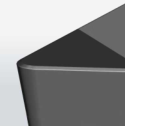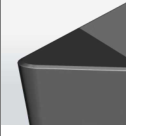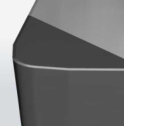The Different Edge Conditions of the PCBN Inserts
Edge processing is a key factor in determining the performance of PCBN inserts. In order to avoid cbn insert edge crack and broken due to large loads
when cutting high-strength materials, ideal machining quality, surface roughness and tool life are achieved for different materials and working
conditions. It is necessary to do some proper edge treatment on the inserts.
S type (Chamfer+Honing)
Large cutting and deep interrupted cutting preferred;
Higher strength than T-type edge, higher cutting tolerance and more durable life;
Stable roughness retention;
Feed rate must be greater than the size of the sharpening.
T type (Chamfer)
Universal edge processing form;
Compared with S type, it has small cutting resistance and stable size. It is suitable for occasions with strict tolerance requirements;
Preferred cutting edge for cast iron cutting.
E type (Honing)
Fine grinding edge, effective against chip impact;
In order to ensure smooth cutting process to prevent breakage, the feed rate needs to be larger than the grinding size;
Superfine alloy finishing preferred edge.
F type (without chamfer and honing)
Smaller cutting resistance helps reduce surface roughness and is suitable for finishing applications.
Wiper type
Excellent surface quality comparable to grinding;
Better surface quality at the same feed rate;
Maintain higher feed rate under surface quality and greatly improve processing efficiency;
Recommended for continuous processing.
Previous Article:Reasonable Choice of PCBN Cutting Tool Inserts Parameters
Next Article: The selection and cutting parameters of the PCD Inserts











